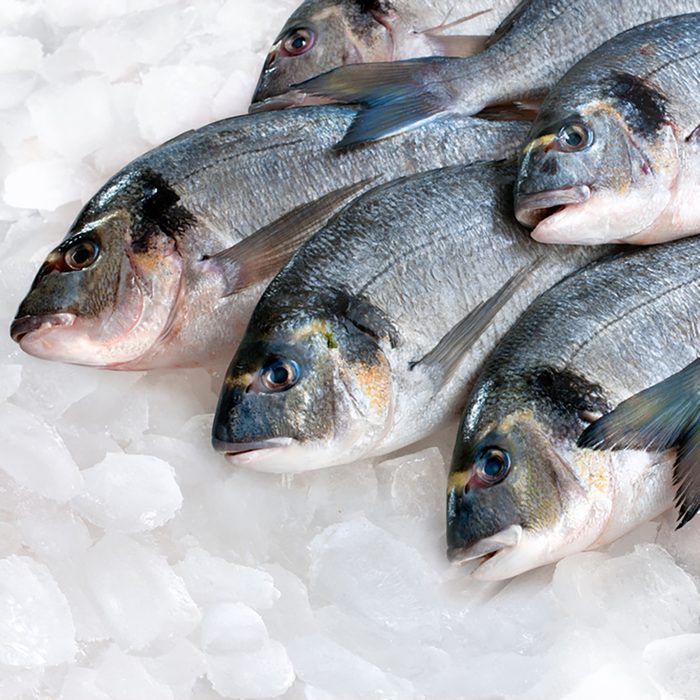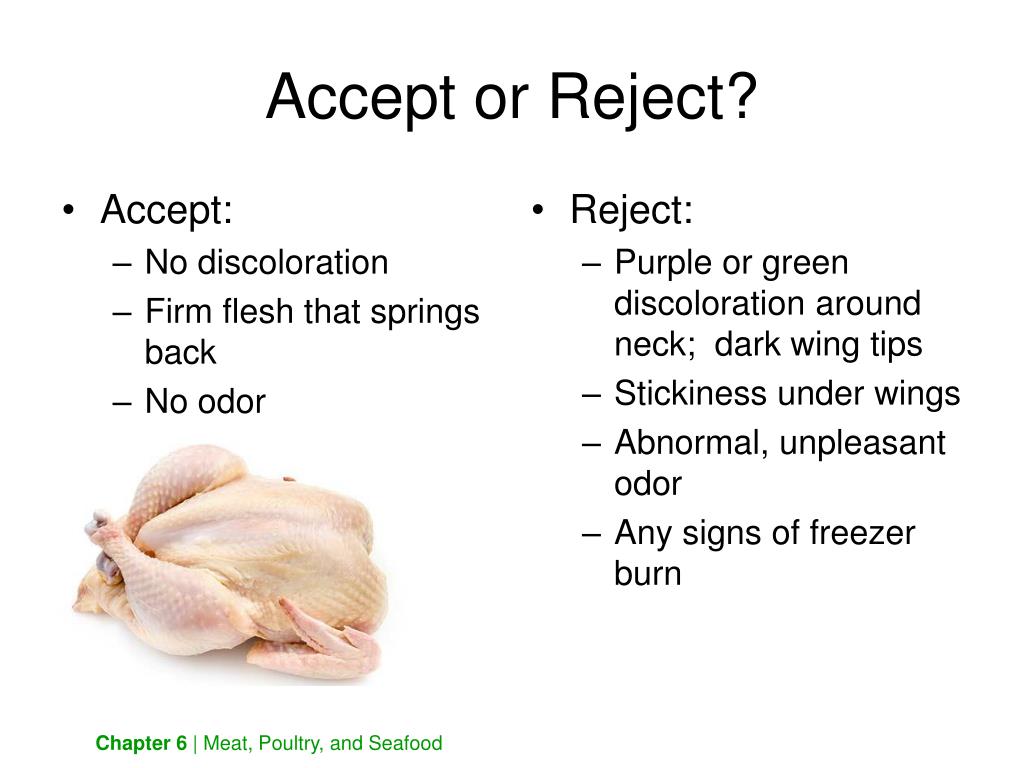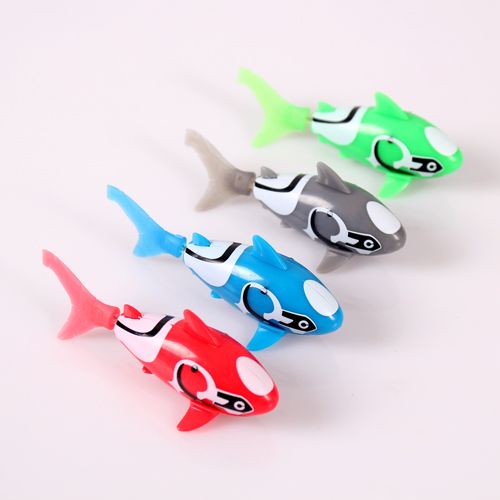What Is A Sign You Should Reject A Fish Delivery

The salty air stings your nostrils as you eagerly await the arrival of your seafood delivery. Visions of perfectly seared scallops and flaky grilled cod dance in your head. But as the delivery driver approaches, a nagging feeling of unease settles in. The box looks a little too beat up, and a faint, not-so-pleasant odor wafts from within. Is this the culinary masterpiece you were hoping for, or a potential disaster waiting to happen?
Knowing when to reject a fish delivery is crucial for ensuring food safety, quality, and overall enjoyment. This article will guide you through the key indicators, providing you with the knowledge to confidently assess your seafood and avoid any unpleasant surprises.
The Importance of Freshness: A Deep Dive
Seafood is notoriously perishable, making freshness paramount. Unlike other proteins, fish begins to degrade almost immediately after being caught. This process is accelerated by temperature fluctuations and improper handling.
Histamine poisoning, caused by high levels of histamine in spoiled fish like tuna and mackerel, can lead to unpleasant symptoms. Bacterial contamination, such as Salmonella or Vibrio, is another significant risk associated with consuming improperly stored or handled seafood.
Beyond the health concerns, freshness directly impacts the taste and texture of the fish. A truly fresh fish will have a delicate flavor and a firm, moist texture. Stale fish, on the other hand, can taste fishy, metallic, or even ammonia-like, and its texture becomes mushy and unpleasant.
The Delivery Arrives: Red Flags to Watch Out For
The moment your seafood delivery arrives, engage your senses. Begin with a visual inspection of the packaging.
Is the box intact, or are there signs of damage? A compromised container could indicate temperature abuse or contamination.
Look for any excessive leaking or unusual staining. This could suggest that the fish has been improperly stored or is beginning to spoil.
Next, take a good whiff. Fresh seafood should have a mild, sea-like odor, or virtually no odor at all.
A strong, fishy, or ammonia-like smell is a clear indication of spoilage. Trust your nose; it's one of your best defense mechanisms.
Examining the Fish: A Closer Look
Once you've assessed the packaging, it's time to examine the fish itself. This requires a careful observation of several key characteristics.
First, check the eyes. Fresh fish should have clear, bright, and slightly bulging eyes. Sunken or cloudy eyes are a sign of age and potential spoilage.
Next, inspect the gills. The gills should be bright red or pink and moist. Brown, gray, or slimy gills indicate that the fish is no longer fresh.
The flesh of the fish should be firm and elastic, springing back when touched. If the flesh is soft, mushy, or leaves an indentation when pressed, it's likely not fresh.
The skin should be shiny and metallic in appearance, with tightly adhering scales. Dull, discolored skin or loose scales are signs of deterioration.
Pay close attention to the slime on the fish. Fresh fish have a thin, clear slime. Thick, cloudy, or yellowish slime suggests spoilage.
Pro Tip: If you're buying whole fish, look for bright red blood near the backbone. This indicates that the fish was recently caught and properly bled.
Specific Fish Considerations: Variations in Freshness
While the general guidelines above apply to most types of fish, there are some specific considerations for certain species.
Shellfish (clams, mussels, oysters) should be alive when you receive them. Tapping on the shell should cause it to close. Discard any shellfish with cracked or broken shells, or those that don't close when tapped.
Shrimp should have a firm, translucent flesh and a mild odor. Avoid shrimp that are slimy, discolored, or have a strong ammonia smell.
Tuna is particularly prone to histamine poisoning. Look for a deep red color and a firm texture. If the tuna has a brownish or greenish tint, or a metallic taste, reject it.
Salmon should have a vibrant color, ranging from bright pink to deep red depending on the species. Look for distinct marbling of fat throughout the flesh. Avoid salmon that appears dull or has a grayish tinge.
Temperature Matters: Maintaining the Cold Chain
Temperature is a critical factor in preserving the freshness of seafood. The ideal temperature for storing fresh fish is between 30°F and 32°F (-1°C and 0°C). This slows down the growth of bacteria and enzymatic activity that lead to spoilage.
During delivery, the fish should be kept cold, ideally packed with ice or gel packs. If the fish feels warm to the touch or the ice packs have completely melted, there's a good chance it has been exposed to temperature abuse.
The FDA recommends that seafood be transported and stored at temperatures that prevent spoilage and the growth of harmful bacteria. They also emphasize the importance of proper sanitation and hygiene throughout the entire seafood supply chain.
Dealing with a Bad Delivery: Your Rights and Options
If you receive a fish delivery that doesn't meet your expectations, don't hesitate to reject it. Most reputable seafood vendors will have a clear return policy.
Document your concerns with photos and detailed descriptions. This will help you support your claim and ensure a smooth return process.
Contact the vendor immediately to explain the issue. Be polite but firm in your request for a refund or replacement.
In some cases, you may also want to report your concerns to your local health department. This is especially important if you suspect foodborne illness or unsafe practices.
Beyond the Delivery: Responsible Consumption
Rejecting a bad delivery is just one aspect of responsible seafood consumption. Choosing sustainable seafood options is equally important. Look for certifications from organizations like the Marine Stewardship Council (MSC) or the Aquaculture Stewardship Council (ASC).
These certifications ensure that the seafood you're buying comes from fisheries or farms that are managed in an environmentally responsible manner. By making informed choices, you can help protect our oceans and ensure that future generations can enjoy the bounty of the sea.
Conclusion: A Matter of Taste and Safety
Rejecting a fish delivery might feel awkward, but it’s a necessary step in protecting your health and ensuring a positive culinary experience. By paying attention to the appearance, smell, and texture of the fish, and understanding the importance of temperature control, you can confidently make the right decision.
Ultimately, knowing when to say "no" is an act of empowerment. It signifies that you value quality, safety, and a delicious meal. So, trust your senses, follow these guidelines, and enjoy the fruits (or rather, the fish!) of your labor.



![What Is A Sign You Should Reject A Fish Delivery What Is a Sign to Reject Fish Delivery? [Comprehensive Answer] - Nahf](https://images.pexels.com/photos/15409150/pexels-photo-15409150.jpeg?auto=compress&cs=tinysrgb&w=1200)


.jpg)

.jpg)









